


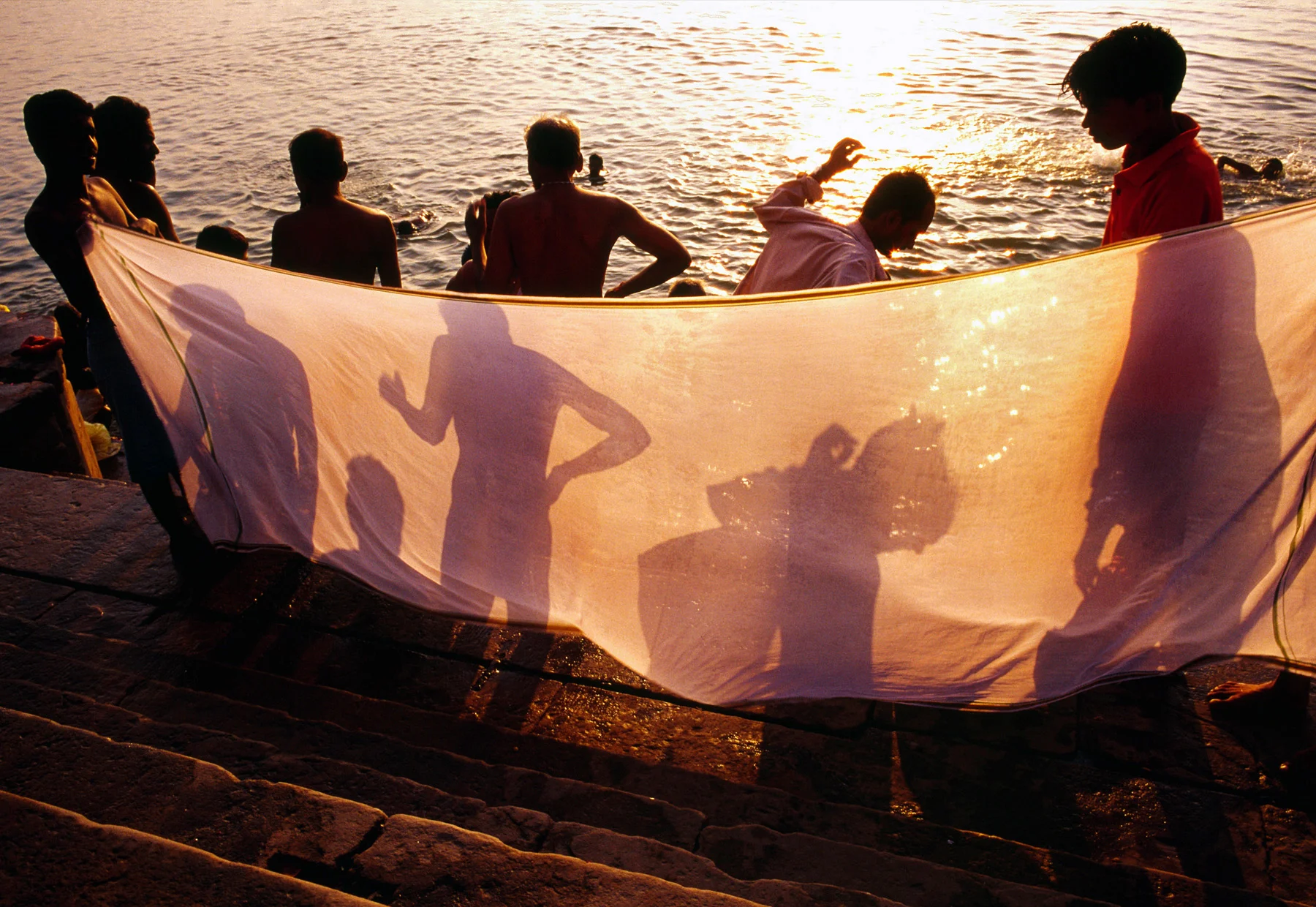

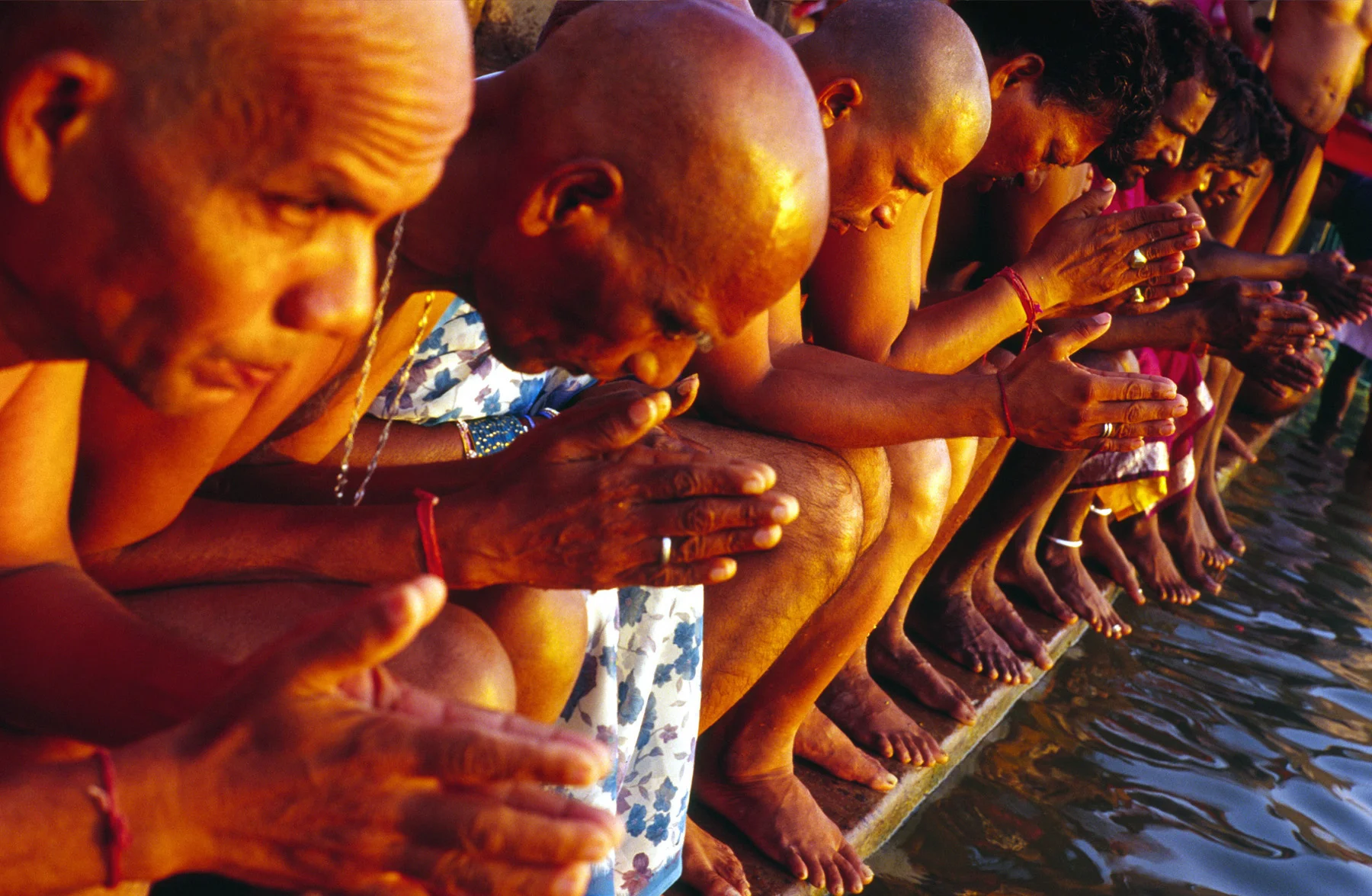

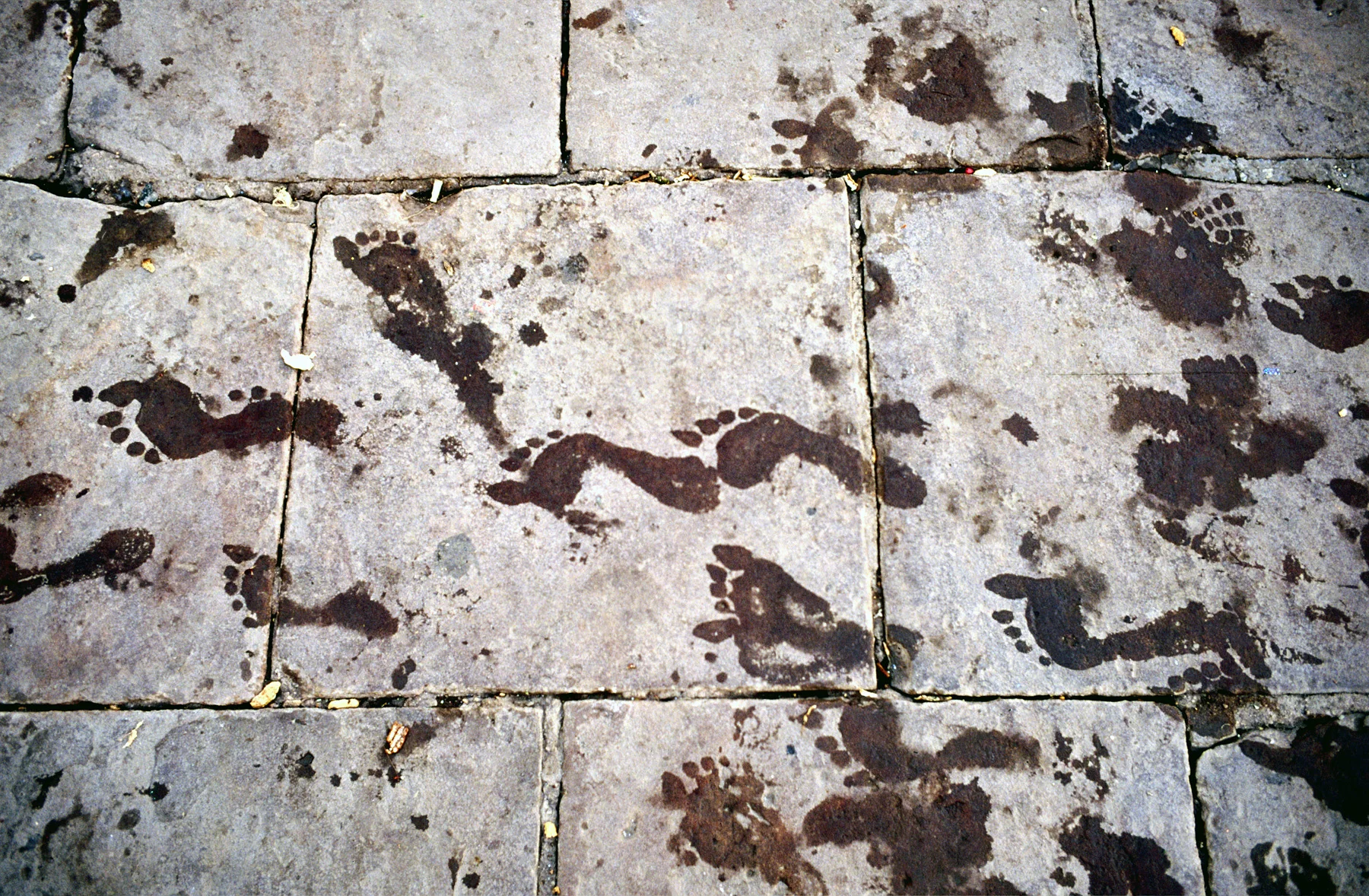




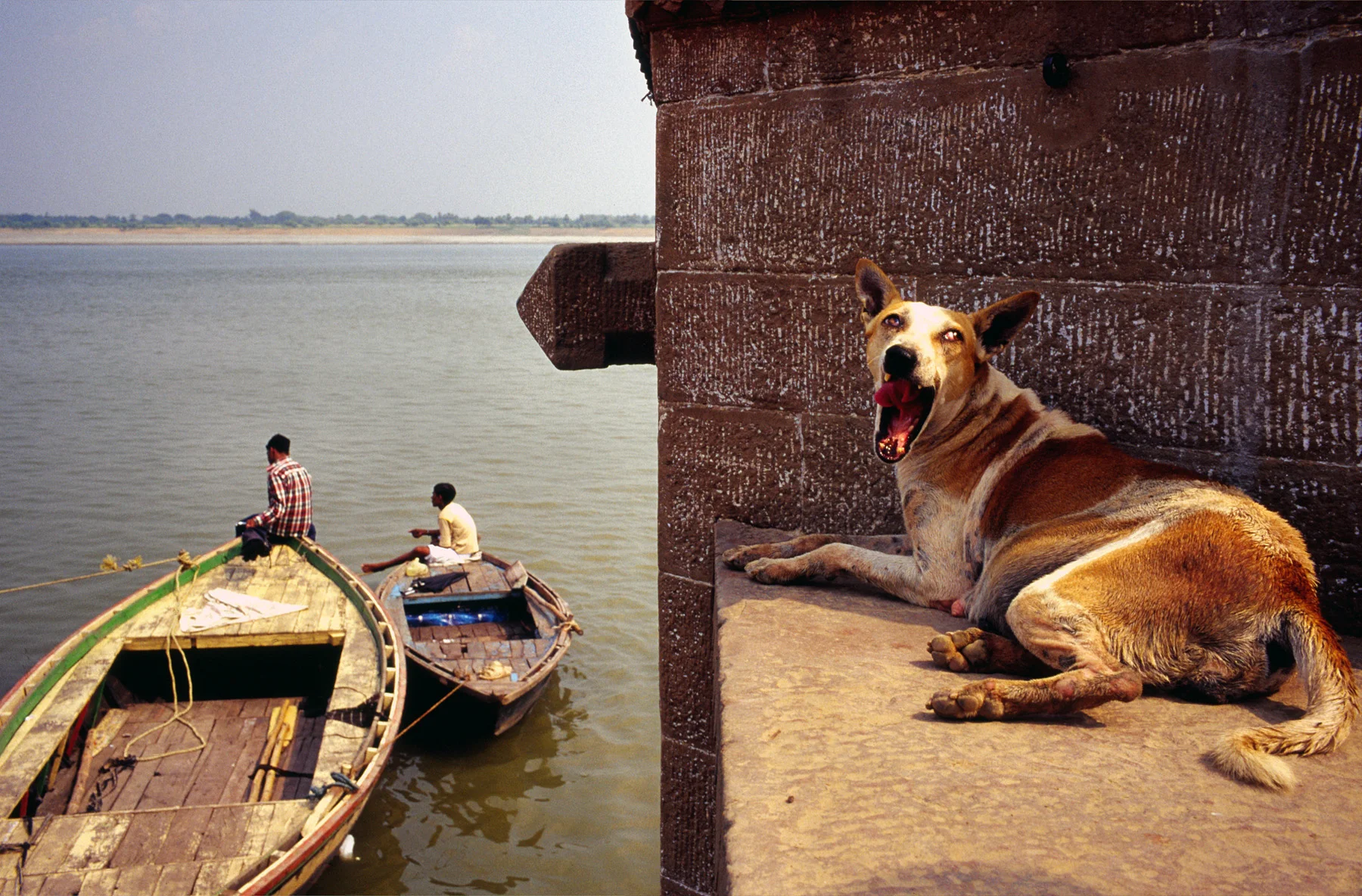





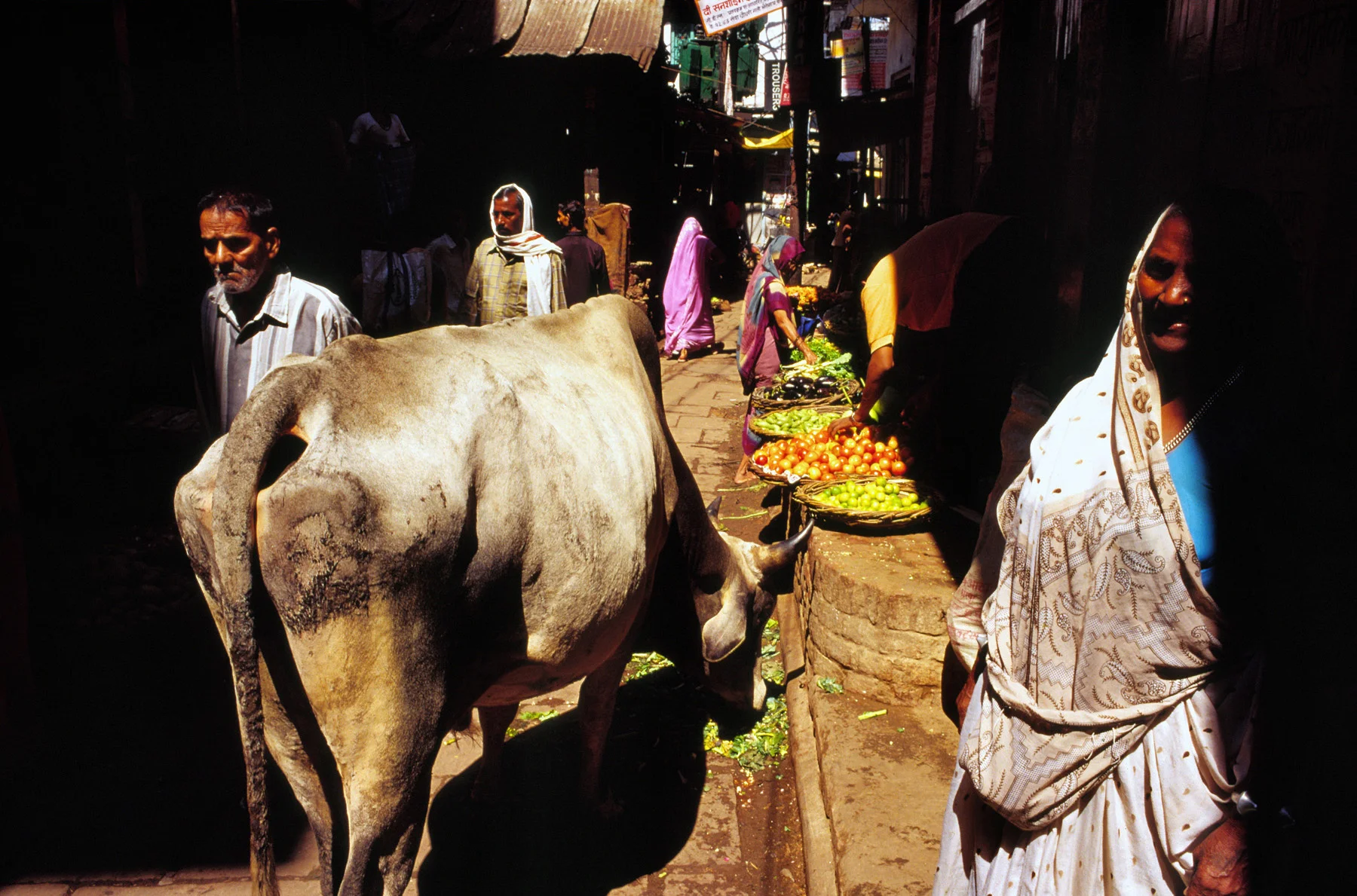

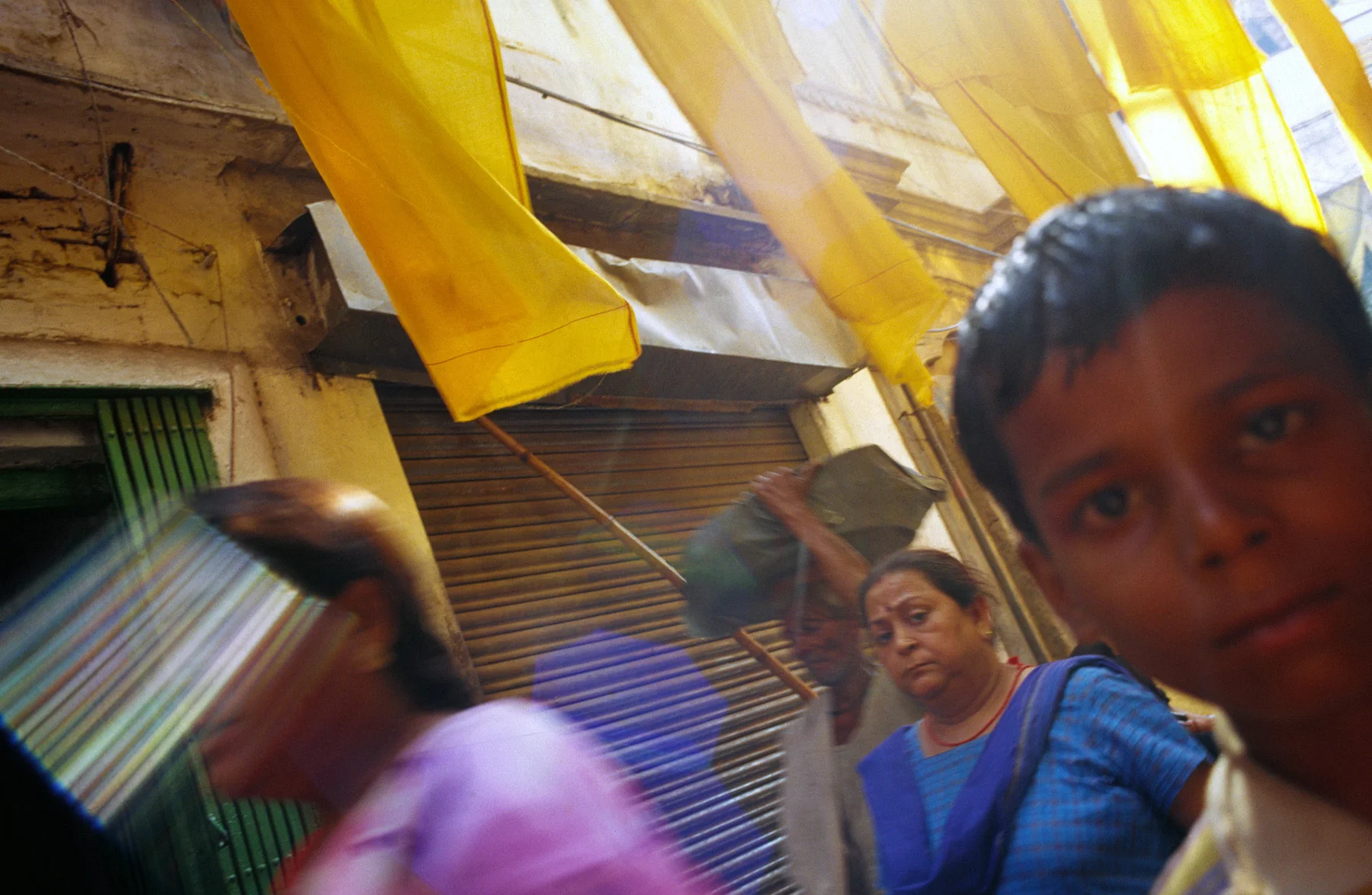
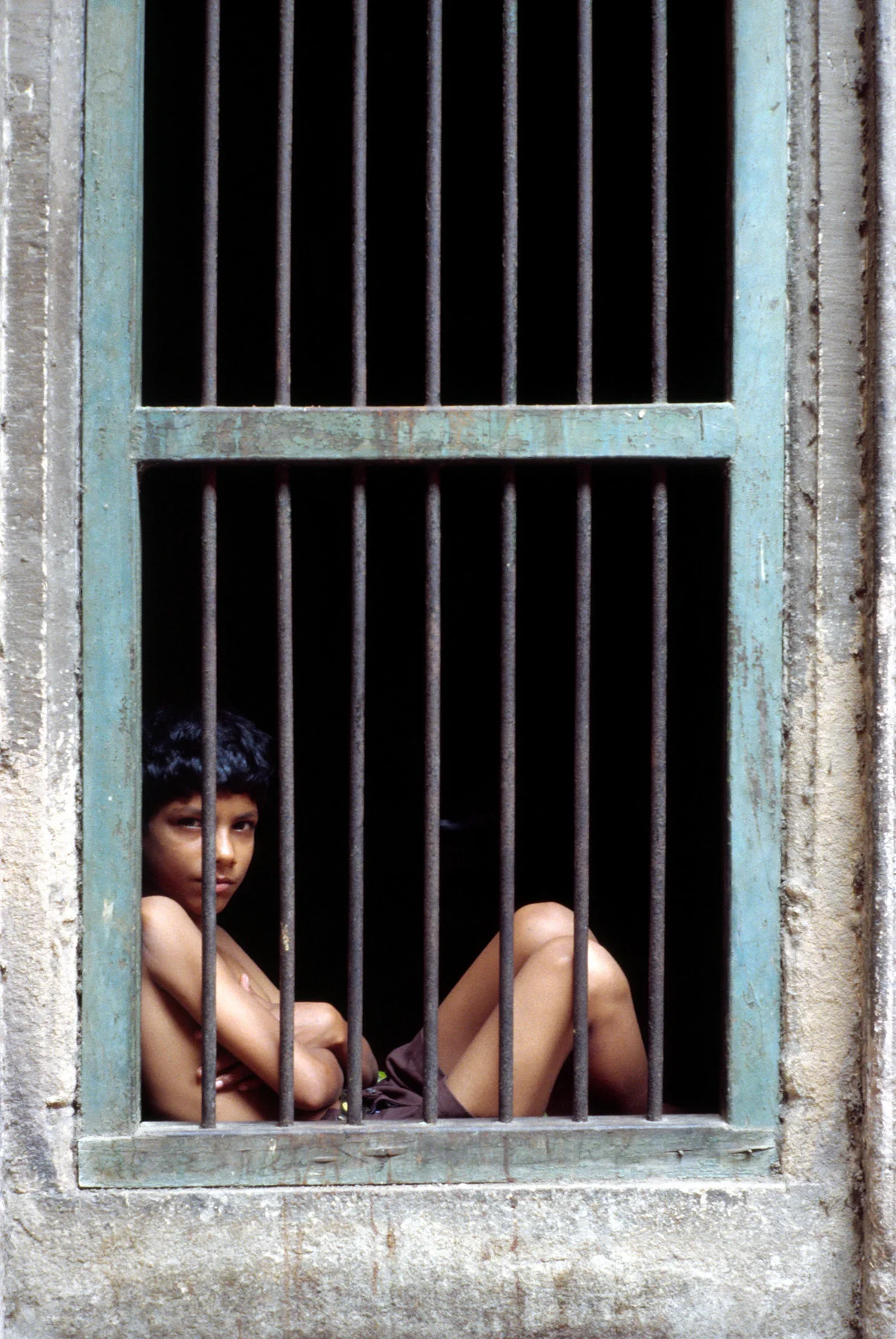

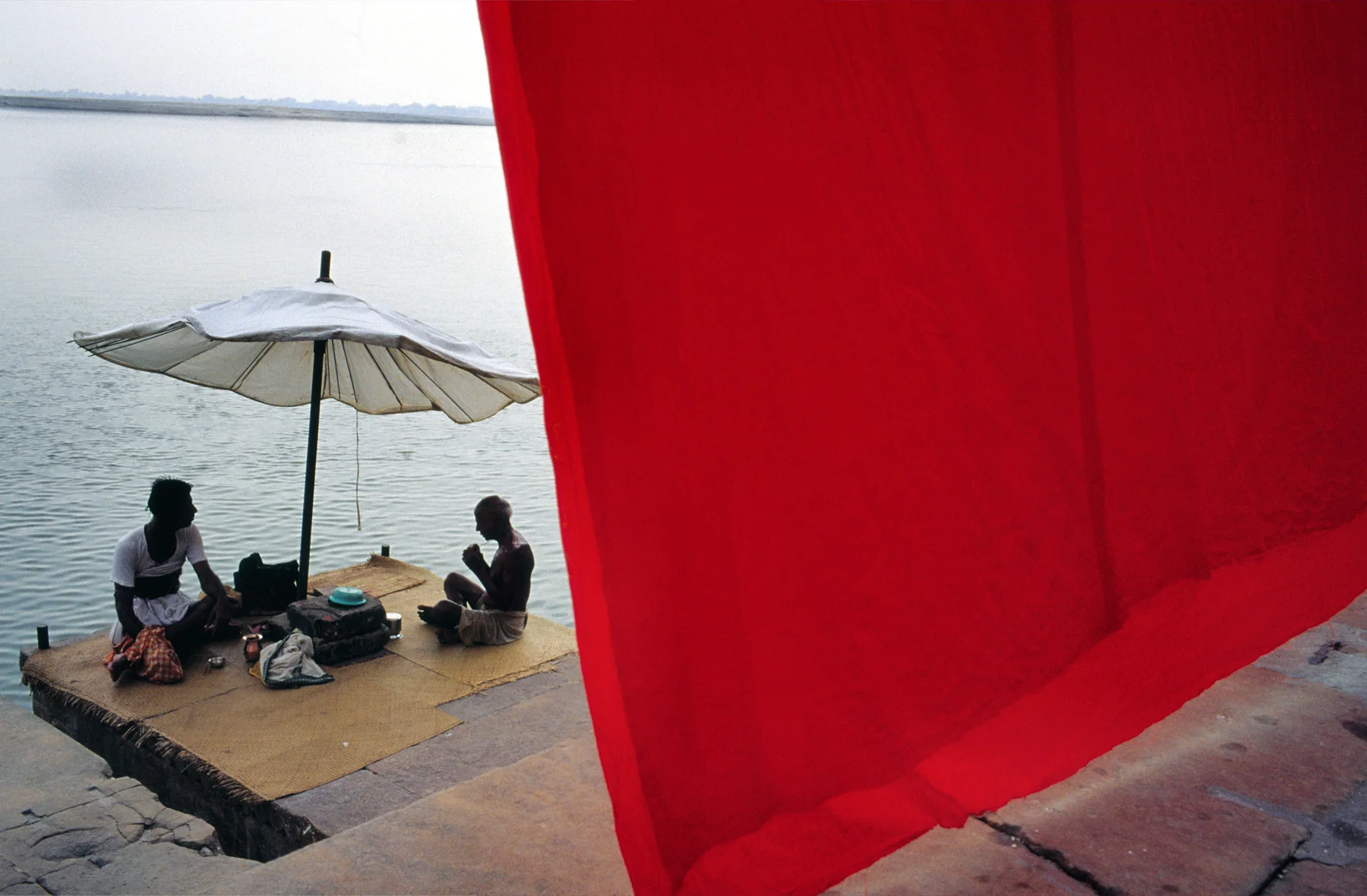
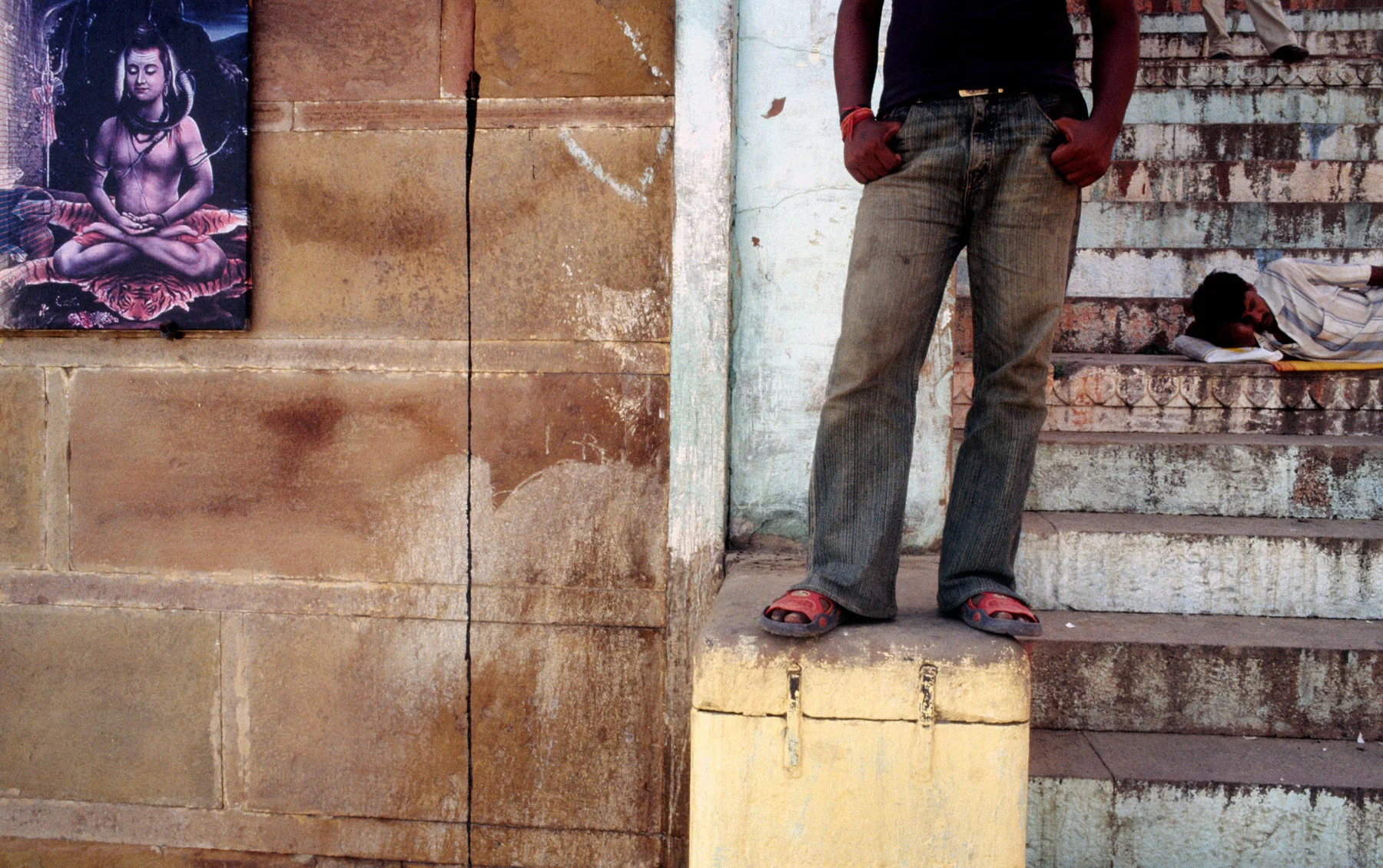
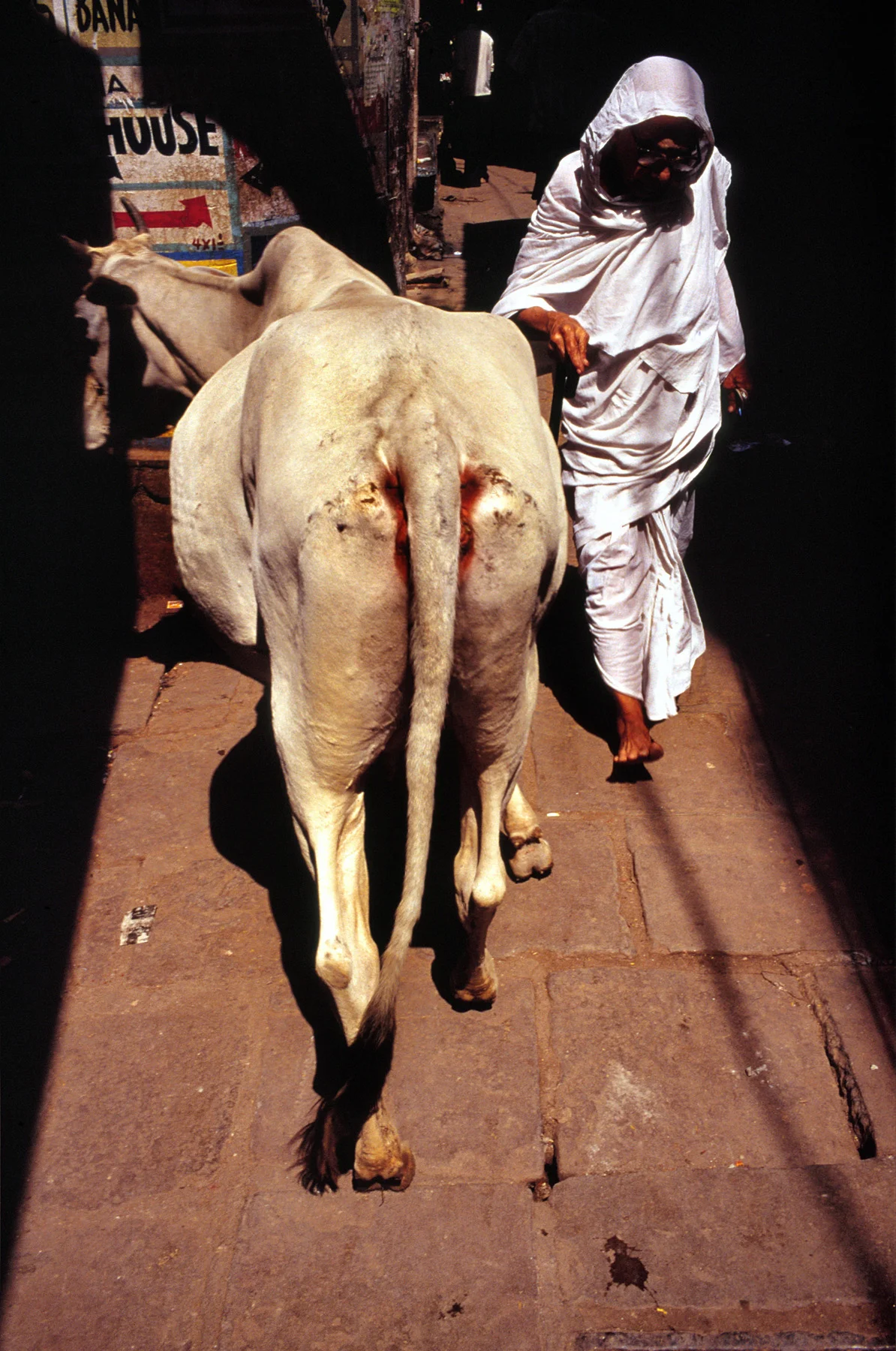

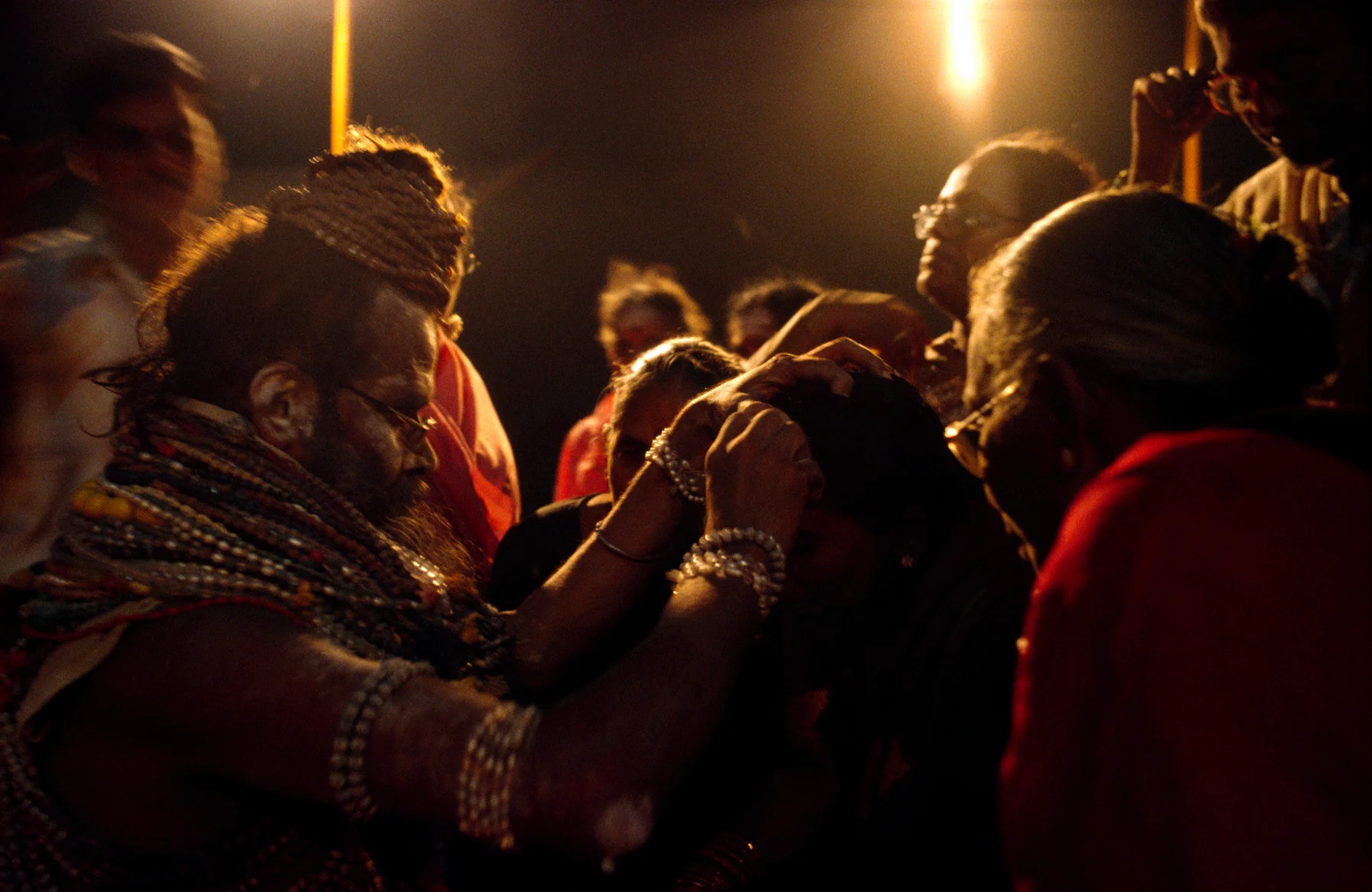

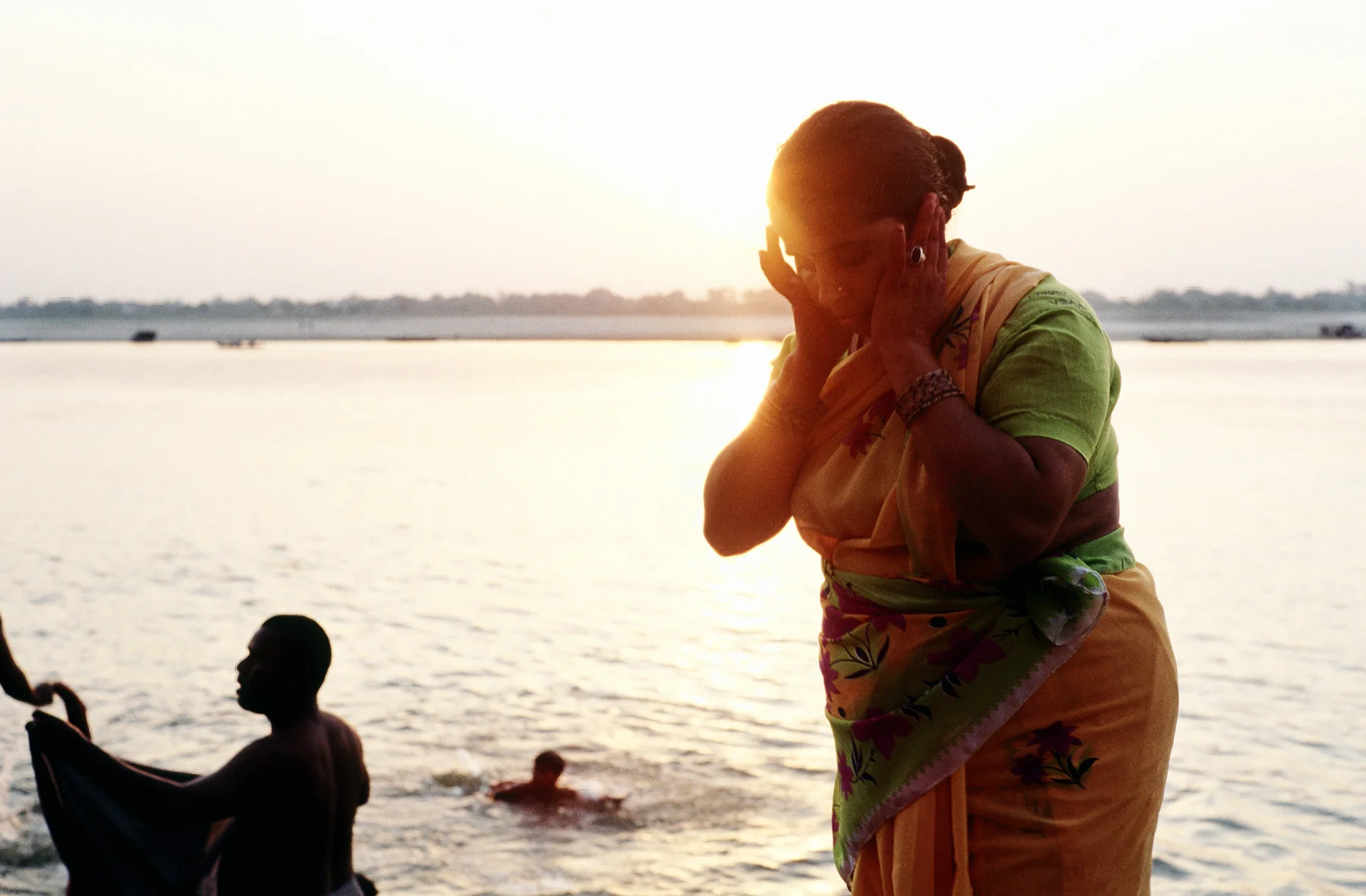

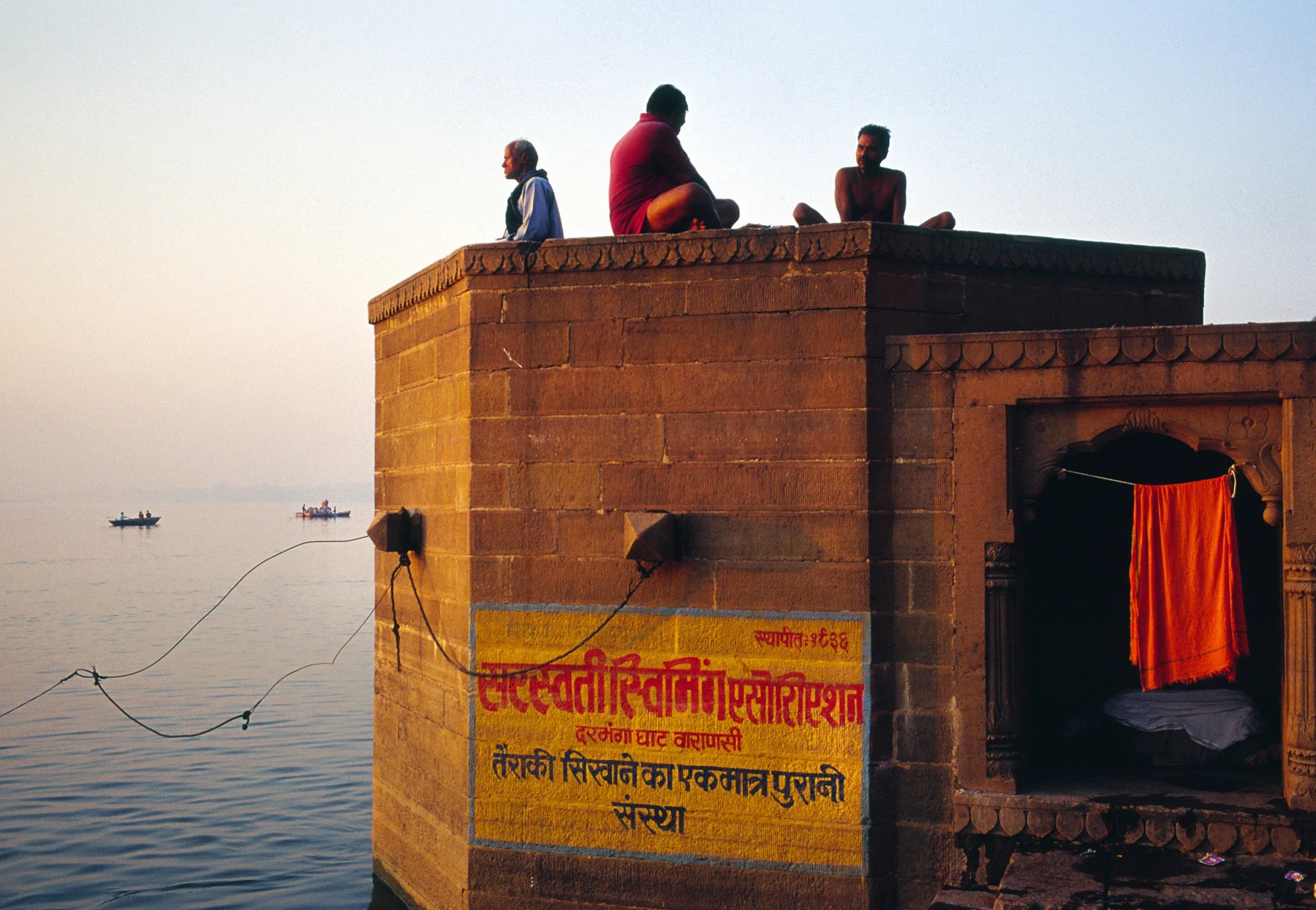

Along the holy river
To Varanasi – either by train, by bus, or on foot, a moment after a traveler steps into this city that lies at the bottom of the world, he or she will be welcomed by innumerable eyes, both alive and dead, staring directly.
It is hard to find a person with an interest in India who doesn’t know the name Varanasi. The city lies between the Varuna River in the north and the Assi River in the south. The combination of the two rivers makes the name of the city. Located on a crescent-shaped bank along the mother Ganga, Varanasi is considered the forehead of Shiva, the god in Hindi mythology; therefore, it is a sanctuary for more than 3,000 years.
It cannot be talked about without Ganga. The time flow of this city goes by the rhythm of deliberate reincarnation of water in the river. According to the Hindu faith, one can emancipate from all worldly desires and worries and purify all sins in life after bathing in the Ganga and letting the ash of the body float on the river after death. Committing to these, it is believed, is the highest honor and happiness in the Hindu value system. Every year, more than a million pilgrims from all over India struggle along to this city.
Varanasi is a city of bathing ghats and alleyways. Ghats are public bathing spaces with stairs stretching out down to the river. They are former palaces and villas of lords and noble families. Locals and pilgrims bathe, pray, sing, cry, eat, drink, do laundry, brush teeth, and die here. All alleyways in the city lead to one of 84 ghats. Countless alleyways form a web of streets showcasing life. From birth to death of both humans and animals can be seen. It seems, as if once and for all, there is no boundary among all living creatures.
This sanctuary is covered with people, mud, bricks, excrements of various animals, voices of chanting and smoke of Hindu rituals. Ganga and narrow alleyways in Varanasi are like in the relationship between the main artery and the vessels carrying the essence of the Hindi culture. Life and death are bluntly carried out; it seems almost impossible to observe, digest, react, and try to make sense out of daily occurrences happening right in front of one’s eyes. In Varanasi, they tell you all human occupations fill only a split second in the great cycle of reincarnation. It happens, and then it is finished.
聖河の周辺
ヴァラナシへ。この街へ一歩足を踏み入れると同時に無数の眼が、生きている眼も死んでいる眼も、訪れる者達の色覚を直線的に射してくる。
インドに少なからずの興味を持つ人々の中に、ヴァラナシという街の名前を知らない人を見つけるのは容易ではない。この街は北をヴァルナ河、南をアッスィー河に挟まれているためにこの名が付いた。南北の河の母体となるガンジス河は言わずと知れたインド国内に最大信者数を誇るヒンズー教のシンボルであり、訪れる人々は尊崇の念を持って「ガンガー」と呼ぶ。ヴァラナシはガンガーが創りだした三日月形の河岸に3000年の昔から栄えるヒンズー教最大の聖地であり、その形からヒンズー神話のシヴァ神の額にたとえられている。
ヴァラナシがガンガー抜きで語られることは不可能であり、この街の時間軸はガンガーが刻む慎重な輪廻のリズムにからみとられているようだ。ヒンズー教の教義によると、人は死後の灰をガンガーに流すことにより、生前に俗世で染み付いたあらゆる欲望や悩み、犯した罪の数々から解放されるという。それ故に、死をこの聖地で迎えることが人生末期のヒンズー教徒にとって最大の関心事であり、年間を通じて多くの巡礼者がやって来る。
ヴァラナシはガートと呼ばれる公共の沐浴場と入り組んだ路地の街である。ガートの多くは過去の王侯貴族の住まいをそのまま転用したものであり、街の中心から任意の路地をどう歩いて行っても、街を南北に貫くガンガー沿岸に84ヵ所あるガートのどれかに辿り着く。ガートでは地元民、巡礼者、観光客が思い思いの片隅で沐浴し、祈り、歌い、泣き、食べ、飲み、洗濯し、歯を磨き、排泄し、生涯を終え、またはその全てをただ眺める。数え切れない路地はさながらさほど大きくはない街を毛細血管のように覆う人とモノがあふれる重な輪廻のリズムにからみとられているようだ。
数え切れない路地はさながらさほど大きくはない街を毛細血管のように覆う人とモノがあふれる脈であり、生活風景の寸劇場である。この聖地は人、泥、あらゆる生物から流れ出る日々の代謝物、そして祈りの声と放埒な哄笑で埋め尽くされ、生と死は過剰な儀式が排されたあまりにも日常的な循環の中で起こる。ある路上の花売りの男が言った。輪廻転生の観点からは、人の一生は大きな時間軸のほんの一瞬にも満たない些事であり、「死んでガンガーのトロリとした水に抱かれればチャラになるんだぜ。それでいいじゃないか。」この街には聖と俗が混在している。